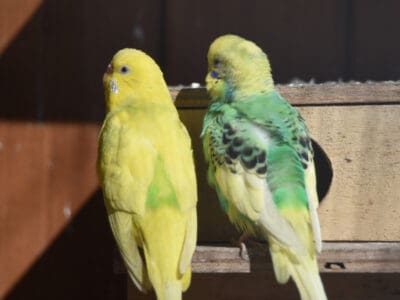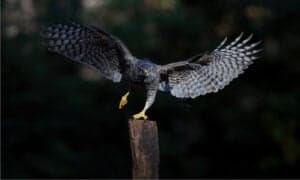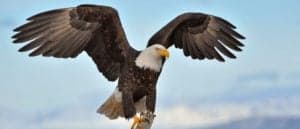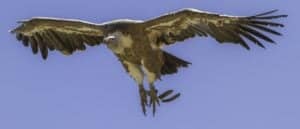Finch vs Sparrow: Key Differences Explained
@media (min-width: 481px) {
.mobile-top-content {
display: none;
}
}
#mobileTopContentCTACarouselControls { overflow: hidden; text-overflow: ellipsis; white-space: nowrap; }
.mobile-top-content .more { color: #fff; }
.mobile-top-content a { color: #fff; text-decoration: underline; }
.mobile-top-content a:hover { color: #fff; text-decoration: underline; }
@media (max-width: 480px) {
.mobile-top-content {
background-color: #06a10b;
color: #fff;
text-align: center;
/*height: 60px;
padding-top:5px;*/
font-size:80%;
/* display: block; */
margin: 0px -30px;
}
}
Birdwatching is a hobby anyone can (and should!) pick up. It’s free, pulls you into the world of nature observation, and allows you to find a little joy by way of the little creatures in your backyard. Two of the most common types of bird you are likely to encounter are the finch and the sparrow. Today, we are going to compare the two, so you can tell the difference. Let’s discover: Finch vs Sparrow; what makes them different?
Comparing a finch and a sparrow
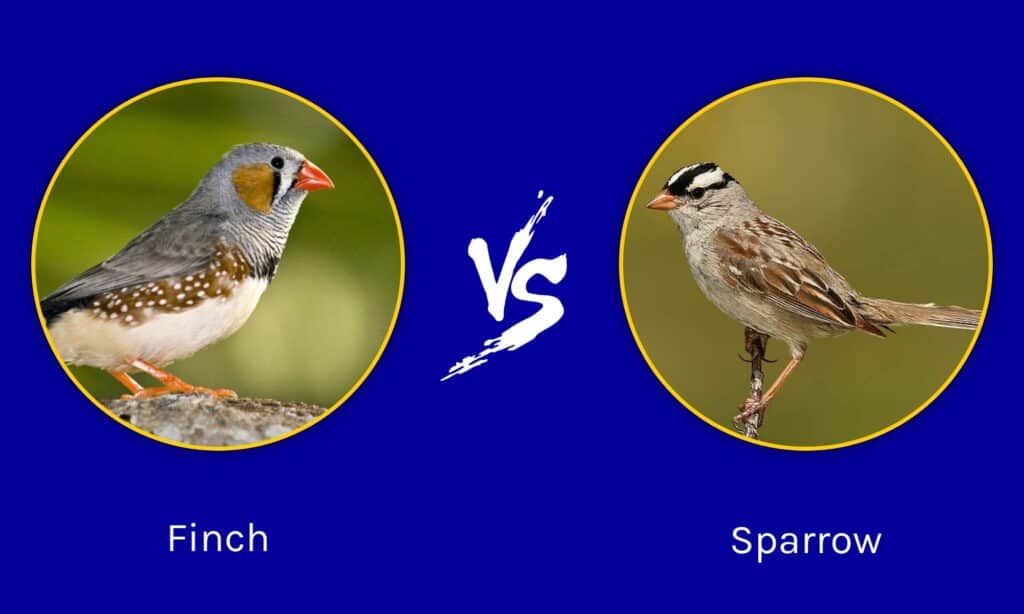
A-Z-Animals.com
| Finch | Sparrow | |
|---|---|---|
| Leg length | Shorter legs, usually dark in color | Longer legs, often lighter in color |
| Pattern complexity | Generally less complex patterns, plainer feathers | Semi-complex to complex patterns and color variations |
| Tail length and usage | Shorter tails, usually kept down | Longer tails, often flashed and displayed |
| Bill shape | Smaller bills, more sharply pointed | Slightly larger bills, thicker, usually have a slight curve |
| Number of species | 231 distinct species classified as “true” finches | 35 species of New World sparrow |
The 5 main differences between a finch and a sparrow
The main differences between finches and sparrows are their leg, tail size, the shape of their bill, and the general complexity of their pattern and coloration. It’s important to note, however, that finches and sparrows aren’t a single species, but groupings of birds with similar traits. As a result, there is no single “tell” or “difference” that works 100% of the time. For most North American species, the above-mentioned differences are generally true.
button.pulse {
transform: scale(1); animation: pulse 2s infinite;
box-shadow: 0 0 0 0 rgba(11, 247, 25, 1);
}
@keyframes pulse {
0% { transform: scale(0.90); box-shadow: 0 0 0 0 rgba(11, 247, 25, 0.5); }
60% { transform: scale(1); box-shadow: 0 0 0 15px rgba(11, 247, 25, 0); }
100% { transform: scale(0.90); box-shadow: 0 0 0 0 rgba(11, 247, 25, 0); }
}
Finches are a group of birds that belong to the family Fringillidae. There are many finch species within this family, all of them with different bodies, patterns, and colors. Finches are known as songbirds, and they are all relatively small, active birds. The most common finch that people see in the United States is the house finch which can be identified by its dull redhead and gray body.
New World sparrows (sparrows that live in North, Central, and South America) belong to the Passerellidae family. Although the name “sparrow” is common, New World sparrows are not closely related to Old World sparrows of the Passeridae family. To the average onlooker, sparrows are quite difficult to differentiate from finches. An important note, however, is that one of the most common sparrows in North America, the house sparrow, is actually a member of the Old World sparrow family. Because of this, the following differences may not apply as directly to them.
Let’s look at what makes finches and sparrows different in some more detail below! Keep in mind that these differences refer to sparrows and finches in North America and may not apply to all species of finch and sparrow.
Finch vs Sparrow: Leg length
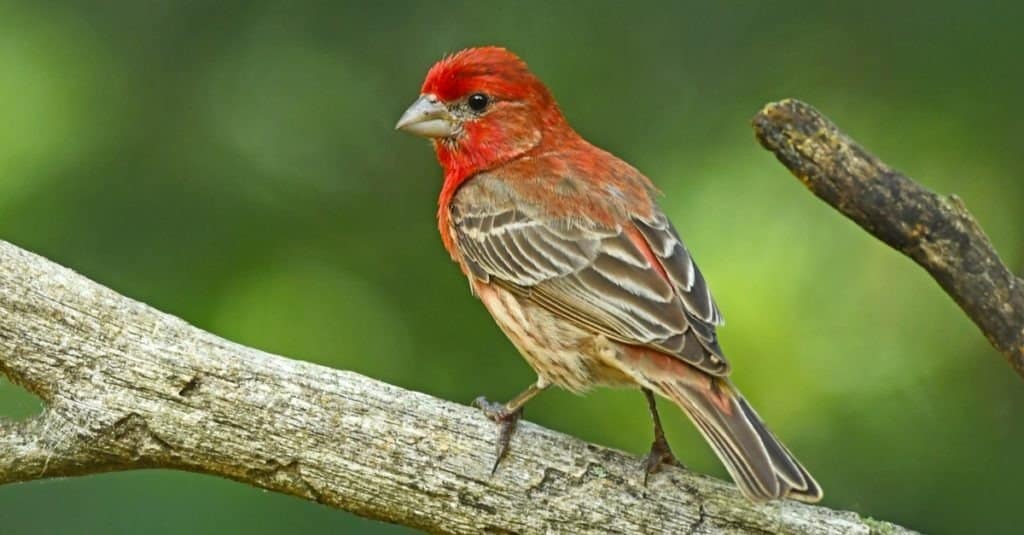
Brian A Wolf/Shutterstock.com
Finches are often seen perched on shrubs and trees in backyards and in forests. Generally, the legs of an adult finch will be shorter than sparrows. Additionally, most finches have dark grey or black legs. If you see a finch perched, make sure to look at its legs for these details.
Sparrows are usually a bit larger than finches, but it isn’t always easy to tell. Even still, the legs of a sparrow are almost always going to be longer than a finch and more noticeable when perching. Additionally, sparrows have lighter-colored legs that are often pale white or pink.
Finch vs Sparrow: Pattern complexity
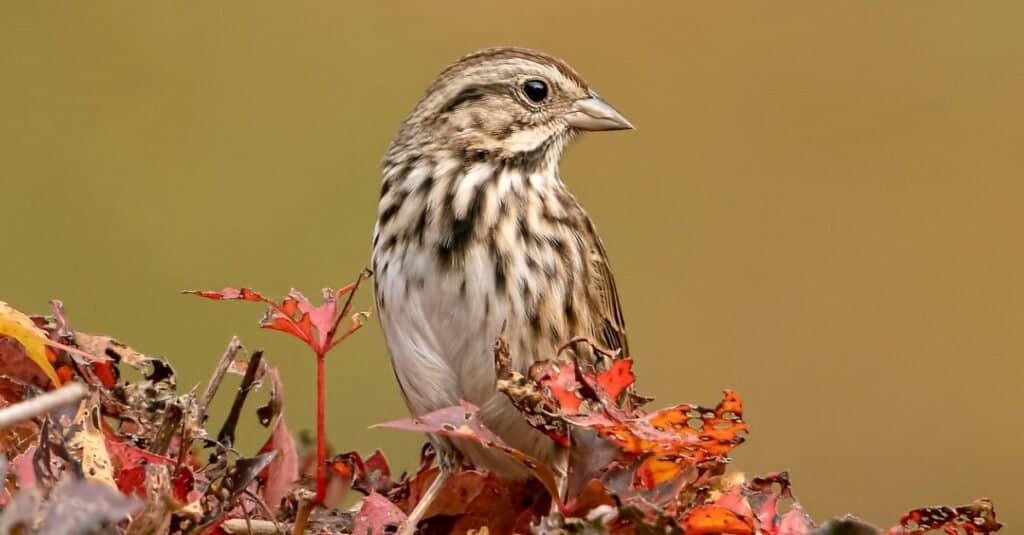
iStock.com/Luc Pouliot
In North America specifically, finches are generally less patterned than sparrows are. That isn’t to say that finches are drab (the goldfinch easily disproves that), but their patterns are usually less intricate, especially around the face and head. When it comes to the amount of color across the family, the finch likely has the edge, but the sparrow has the edge when it comes to pattern intricacy.
Sparrows have rather intricate patterns across their bodies. The most likely places for them to have patterning are their back and head. Many species of sparrow have stripes or “caps” on their head that are clearly visible from a distance. Most sparrows are white, brown, and black.
Finch vs Sparrow: Tail length and usage
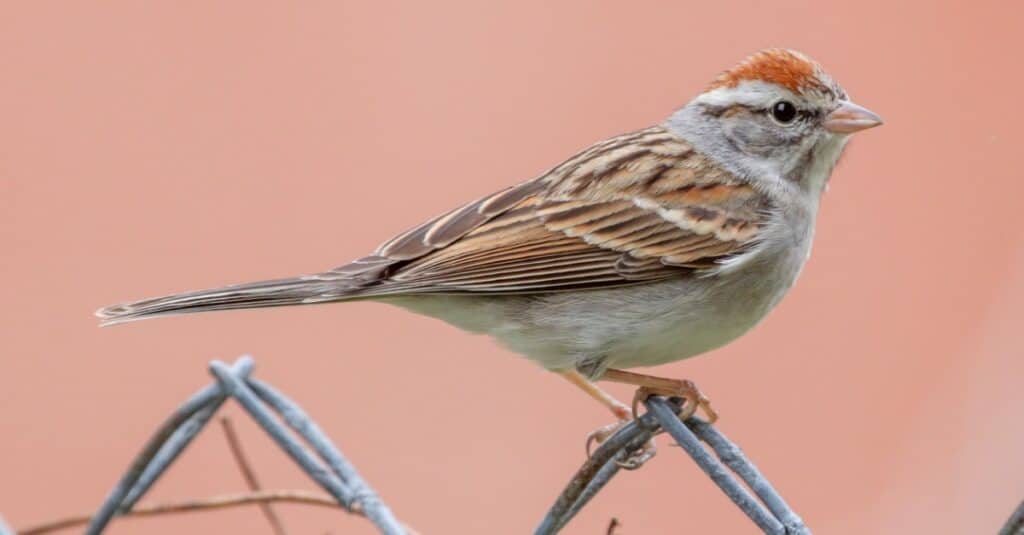
iStock.com/Wesley Lawrence
Finches and sparrows both have tails, but the finches are usually shorter and thinner than the sparrows. When a finch is perched, it often keeps its tail down. Although finches will flash their tails, they don’t do it nearly as much as a sparrow.
Sparrows have longer and wider tails that are usually quite visible to anyone watching. When perched, sparrows often stick their tails out behind them in a distinct manner. Additionally, sparrows flash their tails quite a bit, sometimes even drawing attention to them before they were visible in the first place.
Finch vs Sparrow: Bill shape
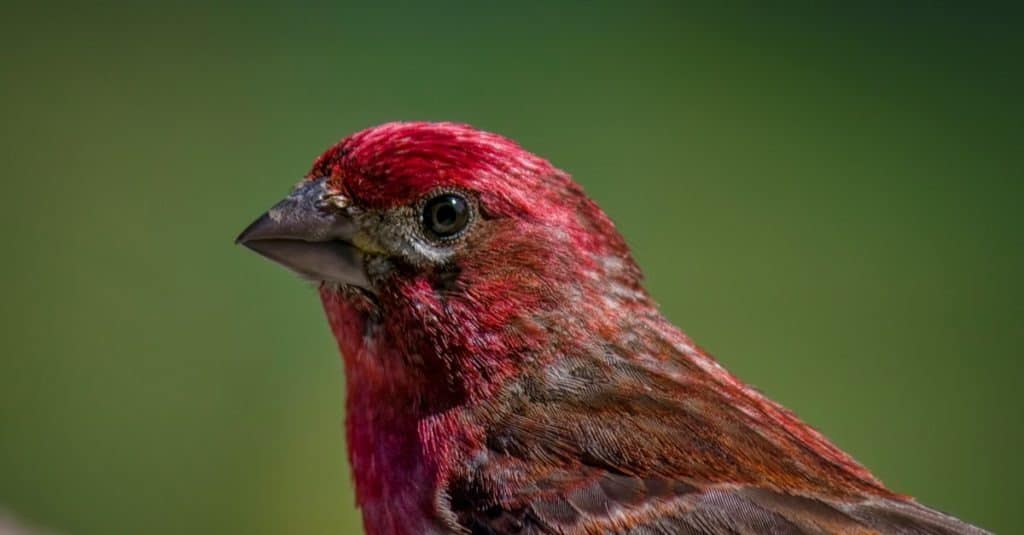
Fiona M. Donnelly/Shutterstock.com
Most birds have a bill that is designed for the type of food they eat. In fact, the varying bill sizes and uses of finches in the Galapagos are what led Darwin to flesh out the theory of evolution and natural selection. That being said, finches in North America usually have smaller bills that are straight with a distinct point.
Sparrows also have variation among their bills, but in relation to finches, theirs are usually larger. Additionally, sparrow bills will sometimes have a slight curve to them. The curve isn’t always noticeable, but looking at a bird from the side will sometimes reveal a slight curve on the upper bill that finches don’t really have.
Finch vs Sparrow: A list of common species
Common finch species in North America:
- Evening Grosbeak
- Pine Grosbeak
- House Finch
- Purple Finch
- Cassin’s Finch
- Common Redpoll
- Hoary Redpoll
- Red Crossbill
- Pine Siskin
- Lesser Goldfinch
- American Goldfinch
Common sparrow species in North America:
- American Tree Sparrow
- Chipping Sparrow
- Clay-colored Sparrow
- Fox Sparrow
- Harris’s Sparrow
- LeConte’s Sparrow
- Lincoln’s Sparrow
- Nelson’s Sparrow
- Savannah Sparrow
- Song Sparrow
- Swamp Sparrow
- Vesper Sparrow
- White-crowned Sparrow
- White-throated Sparrow
- House Sparrow
More from A-Z Animals
.more-snake-card-image { max-height:140px !important; }
@media (min-width: 481px) {
.mobile-top-content {
display: none;
}
}
#mobileTopContentCTACarouselControls { overflow: hidden; text-overflow: ellipsis; white-space: nowrap; }
.mobile-top-content .more { color: #fff; }
.mobile-top-content a { color: #fff; text-decoration: underline; }
.mobile-top-content a:hover { color: #fff; text-decoration: underline; }
@media (max-width: 480px) {
.mobile-top-content {
background-color: #06a10b;
color: #fff;
text-align: center;
/*height: 60px;
padding-top:5px;*/
font-size:80%;
/* display: block; */
margin: 0px -30px;
}
}
Birdwatching is a hobby anyone can (and should!) pick up. It’s free, pulls you into the world of nature observation, and allows you to find a little joy by way of the little creatures in your backyard. Two of the most common types of bird you are likely to encounter are the finch and the sparrow. Today, we are going to compare the two, so you can tell the difference. Let’s discover: Finch vs Sparrow; what makes them different?
Comparing a finch and a sparrow

A-Z-Animals.com
| Finch | Sparrow | |
|---|---|---|
| Leg length | Shorter legs, usually dark in color | Longer legs, often lighter in color |
| Pattern complexity | Generally less complex patterns, plainer feathers | Semi-complex to complex patterns and color variations |
| Tail length and usage | Shorter tails, usually kept down | Longer tails, often flashed and displayed |
| Bill shape | Smaller bills, more sharply pointed | Slightly larger bills, thicker, usually have a slight curve |
| Number of species | 231 distinct species classified as “true” finches | 35 species of New World sparrow |
The 5 main differences between a finch and a sparrow
The main differences between finches and sparrows are their leg, tail size, the shape of their bill, and the general complexity of their pattern and coloration. It’s important to note, however, that finches and sparrows aren’t a single species, but groupings of birds with similar traits. As a result, there is no single “tell” or “difference” that works 100% of the time. For most North American species, the above-mentioned differences are generally true.
button.pulse {
transform: scale(1); animation: pulse 2s infinite;
box-shadow: 0 0 0 0 rgba(11, 247, 25, 1);
}
@keyframes pulse {
0% { transform: scale(0.90); box-shadow: 0 0 0 0 rgba(11, 247, 25, 0.5); }
60% { transform: scale(1); box-shadow: 0 0 0 15px rgba(11, 247, 25, 0); }
100% { transform: scale(0.90); box-shadow: 0 0 0 0 rgba(11, 247, 25, 0); }
}
Finches are a group of birds that belong to the family Fringillidae. There are many finch species within this family, all of them with different bodies, patterns, and colors. Finches are known as songbirds, and they are all relatively small, active birds. The most common finch that people see in the United States is the house finch which can be identified by its dull redhead and gray body.
New World sparrows (sparrows that live in North, Central, and South America) belong to the Passerellidae family. Although the name “sparrow” is common, New World sparrows are not closely related to Old World sparrows of the Passeridae family. To the average onlooker, sparrows are quite difficult to differentiate from finches. An important note, however, is that one of the most common sparrows in North America, the house sparrow, is actually a member of the Old World sparrow family. Because of this, the following differences may not apply as directly to them.
Let’s look at what makes finches and sparrows different in some more detail below! Keep in mind that these differences refer to sparrows and finches in North America and may not apply to all species of finch and sparrow.
Finch vs Sparrow: Leg length

Brian A Wolf/Shutterstock.com
Finches are often seen perched on shrubs and trees in backyards and in forests. Generally, the legs of an adult finch will be shorter than sparrows. Additionally, most finches have dark grey or black legs. If you see a finch perched, make sure to look at its legs for these details.
Sparrows are usually a bit larger than finches, but it isn’t always easy to tell. Even still, the legs of a sparrow are almost always going to be longer than a finch and more noticeable when perching. Additionally, sparrows have lighter-colored legs that are often pale white or pink.
Finch vs Sparrow: Pattern complexity

iStock.com/Luc Pouliot
In North America specifically, finches are generally less patterned than sparrows are. That isn’t to say that finches are drab (the goldfinch easily disproves that), but their patterns are usually less intricate, especially around the face and head. When it comes to the amount of color across the family, the finch likely has the edge, but the sparrow has the edge when it comes to pattern intricacy.
Sparrows have rather intricate patterns across their bodies. The most likely places for them to have patterning are their back and head. Many species of sparrow have stripes or “caps” on their head that are clearly visible from a distance. Most sparrows are white, brown, and black.
Finch vs Sparrow: Tail length and usage

iStock.com/Wesley Lawrence
Finches and sparrows both have tails, but the finches are usually shorter and thinner than the sparrows. When a finch is perched, it often keeps its tail down. Although finches will flash their tails, they don’t do it nearly as much as a sparrow.
Sparrows have longer and wider tails that are usually quite visible to anyone watching. When perched, sparrows often stick their tails out behind them in a distinct manner. Additionally, sparrows flash their tails quite a bit, sometimes even drawing attention to them before they were visible in the first place.
Finch vs Sparrow: Bill shape

Fiona M. Donnelly/Shutterstock.com
Most birds have a bill that is designed for the type of food they eat. In fact, the varying bill sizes and uses of finches in the Galapagos are what led Darwin to flesh out the theory of evolution and natural selection. That being said, finches in North America usually have smaller bills that are straight with a distinct point.
Sparrows also have variation among their bills, but in relation to finches, theirs are usually larger. Additionally, sparrow bills will sometimes have a slight curve to them. The curve isn’t always noticeable, but looking at a bird from the side will sometimes reveal a slight curve on the upper bill that finches don’t really have.
Finch vs Sparrow: A list of common species
Common finch species in North America:
- Evening Grosbeak
- Pine Grosbeak
- House Finch
- Purple Finch
- Cassin’s Finch
- Common Redpoll
- Hoary Redpoll
- Red Crossbill
- Pine Siskin
- Lesser Goldfinch
- American Goldfinch
Common sparrow species in North America:
- American Tree Sparrow
- Chipping Sparrow
- Clay-colored Sparrow
- Fox Sparrow
- Harris’s Sparrow
- LeConte’s Sparrow
- Lincoln’s Sparrow
- Nelson’s Sparrow
- Savannah Sparrow
- Song Sparrow
- Swamp Sparrow
- Vesper Sparrow
- White-crowned Sparrow
- White-throated Sparrow
- House Sparrow

